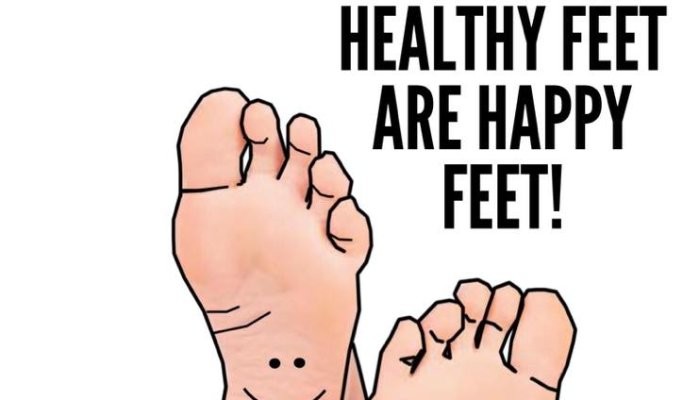
2 Million: How Your Coworkers’ Aching Feet Affects You
According to the August 2015 edition of Safety-Focused, the Society of Chiropodists and Podiatrists report that 2 million sick days a year are lost due to lower limb disorders. 2 million of anything is a significant number, but when we put it in perspective, 2 million sick days is alarmingly low. The American Podiatric Medical Association, APMA, 2014 Public Opinion Research Poll on Foot Health and Care, confirms that people do not readily go to a foot doctor for their foot pain. Since a large majority of people with foot problems don’t see a podiatrist when their feet hurt, that means the 2 million lost work days each year is just the tip of the iceberg. How does this affect you? Stick with me.
The College of Podiatry has determined that 75% of all adults have a foot problem. The APMA confirms that most foot problems stem from wearing the wrong type of footwear. Stilettos, flats, and flip flops are three culprits which fall into this category. Women love the attention-grabbing look of stilettos on their feet. Yes, they may look ‘hot’, and some of them are actually comfortable, for a while. The problems arise when women walk. Shorter strides and maintaining one’s balance are key to successfully moving from point A to point B. Unfortunately, along the way there remains the ever-present possibility of rolling one’s ankle over, causing an ankle sprain.
Even without the stiletto effect, if your coworkers are weekend warriors or consider themselves athletes, their chances of incurring an ankle sprain increases dramatically. According to WebMD, 25,000 ankle sprains occur each day. That’s a whopping 9 million+ ankle sprains a year. This 9 million+ doesn’t include the emergency room visits, or again, the people who don't seek medical attention. That 2 million lost work days each year is rising steadily.
Ballet flats and flip-flops without arch support appear pretty harmless. Unfortunately, they can also create problems because they don’t provide support for feet and ankles. Take into account bunions, plantar fasciitis, fallen arches, corns, calluses and the host of other foot ailments, it’s easy to understand the APMA 2014 Public Opinion Research Poll on Foot Health and Care. It states that nearly 8 out of 10 people have suffered from foot pain. In addition, nearly 50% of these foot sufferers said, “it has impacted their quality of life”. What does all of this have to do with you? I'm glad you asked me.
The September 2015 Paid Sick Days Report from the National Partnership for Women & Families lists “Presenteeism” as workers who report to work but are not as productive, due to illness. This means, when your partner Bob's feet hurt, the big report he has to complete may suffer. Or, if your favorite chef's feet hurt, the food he prepares may not be its normal high quality. Foot pain is very distracting. Those of us who have endured foot pain know that when our feet hurt, everything hurts.
Now that we’ve scratched the surface, 2 million lost work days each year and reporting to work but performing below 100% productivity, let's look at the economic aspects. According to that September 2015 Paid Sick Days Report, 2 in 5 private sector workers can’t earn basic sick leave. This means, when these people incur foot pain which prevents them from reporting to work, they don’t get paid. The economic trickle-down effect of this is a smaller paycheck and less money for rent and food. This also means less money for the kids, daycare, medications, and clothing. In addition, the local merchants that depend on this consumer patronage are also affected because their revenue declines. When your local merchants’ revenue declines, they can’t stock as much of the merchandise you like.
The 2014 Public Opinion Research Poll on Foot Health and Care, and the lack of foot health information on state health assessments, reflects that feet are considered a low priority with Americans countrywide. It’s no surprise that most people don’t pay attention to foot pain until it becomes unbearable. In addition to our feet, our foot problems can affect our back, hips, and legs. What can you do about all of this? I’m so glad you asked!
If you notice someone at work who appears to hobble or walk ‘different’, they may have a serious case of Presenteeism, due to foot pain. If you’re the supervisor or business owner, can you afford to make foot health a low priority? If you care about your employees and want to stay in business, you may want to take action. Below we listed 10 proactive steps you can take.
1) Ask him if his feet hurt. 2) Share this article with her. 3) Encourage him to see the nurse on staff. 4) Encourage her to find a podiatrist. 5) Adjust his work schedule so he can keep his doctor’s appointment. 6) If your coworker spends hours standing on her feet, ensure she get breaks so she can rest her feet. 7) Encourage her to elevate her feet. 8) Refer him to our blog, www.ilovemyfeetdays.com or www.apma.org for good foot care tips. 9) If your coworker is diabetic, make certain he gets the breaks he needs to check his blood sugar and eat at his scheduled time. 10) Be aware that diabetes can kill the nerves in feet. If your coworker injures her feet, she may not feel the pain. Having her stop and examine her feet, or getting her medical attention, could save her from an amputation later.
Being proactive is the first step in reducing 2 million sick days. We’re only as strong as our weakest link. National I LOVE My Feet Day! is August 17. Get tips for pampering your feet from our website and remember, take good care of your tootsies, they have to last you a lifetime!
WALDEN UNIVERSITY MASTERS OF Science HUMAN SERVICE
7yinbox me cuzzo I need some information on feet